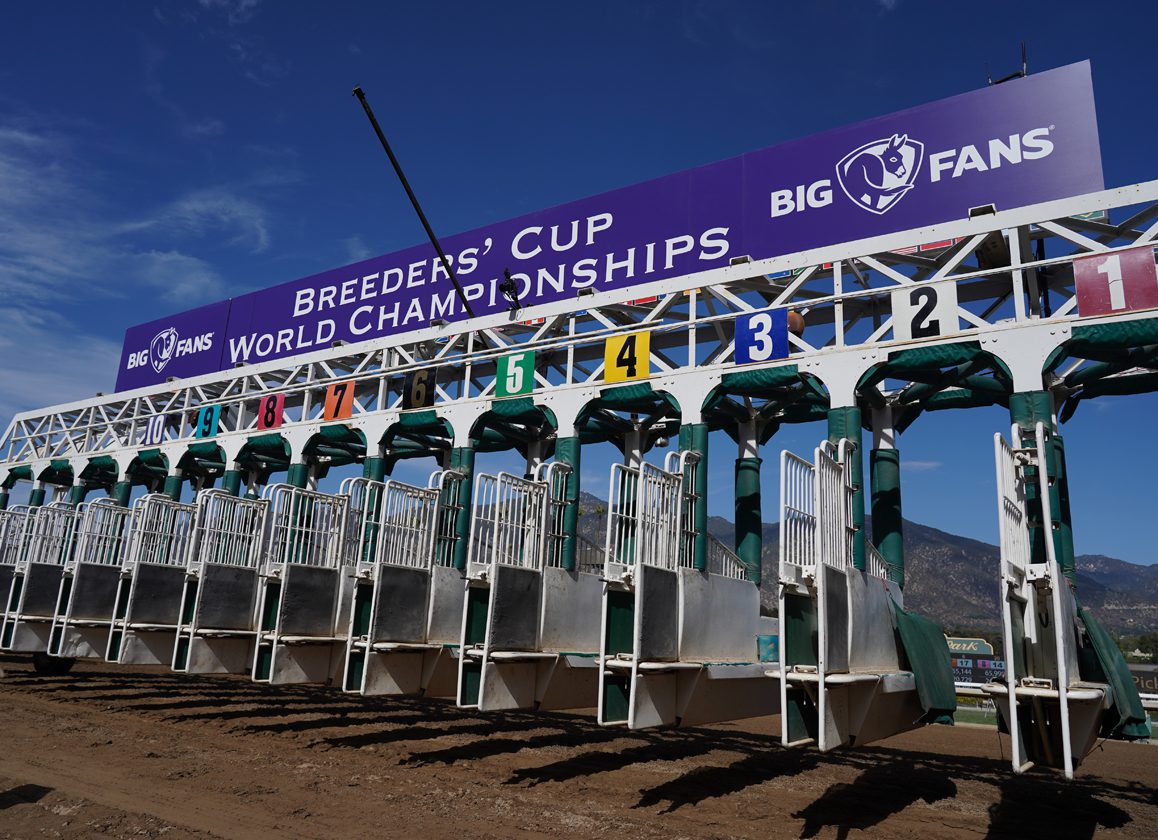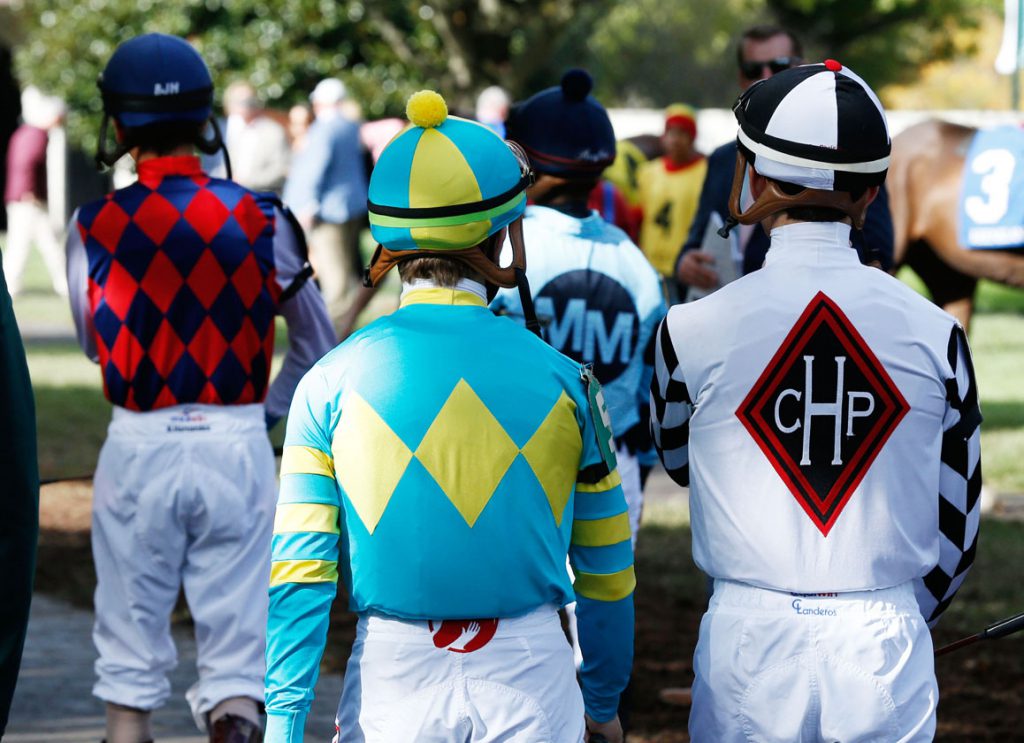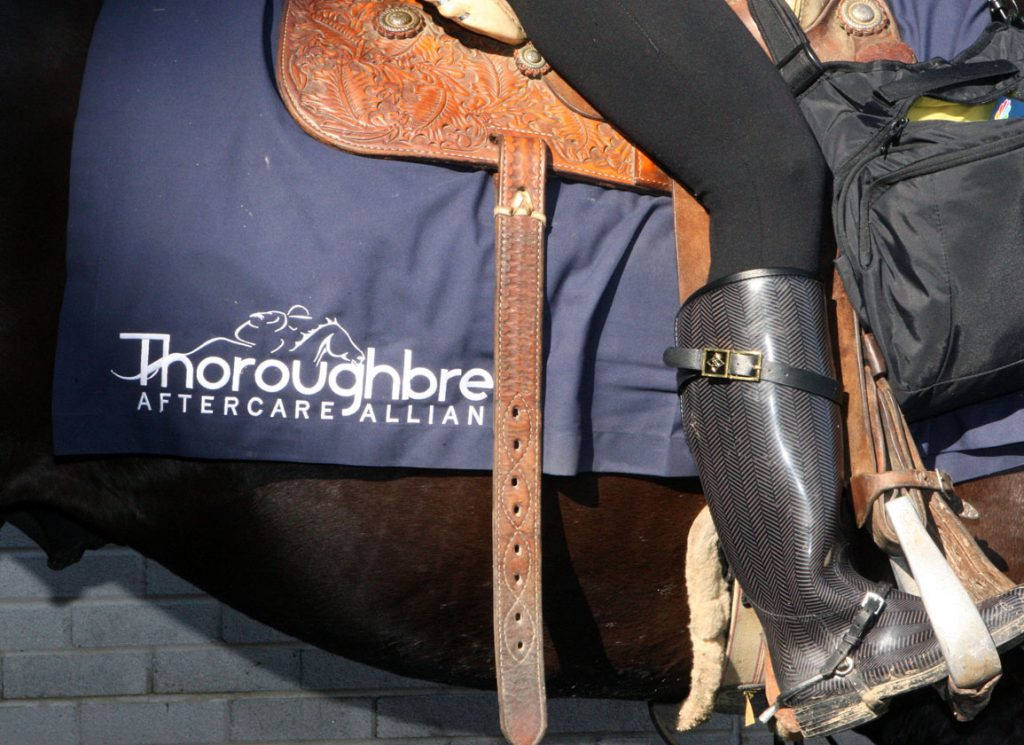By T. D. Thornton
The Breeders' Cup is in the midst of its “40 Days of Giving” program that puts key Thoroughbred industry charities in a collective spotlight with a fundraising twist: This year's initiative involves a money-matching effort in which donors selected by each charity will match up to $1,000 raised by the general public on that charity's designated day. On the final day of the drive, the Breeders' Cup itself will match up to $20,000 in donations, with funds raised on that 40th day to be distributed evenly to all participating charities.
“It's the lead-up to the 40th running of the Breeders' Cup championships. So we're taking 40 days and 11 different charities, and we're trying to raise as much money as possible for all of these charities that are doing incredible work within our industry,” said Stefanie Palmieri, the vice president of events for Breeders' Cup, Ltd. “And the idea behind the match is that we can engage the public knowing that if they donate, there's a potential for their donations to be doubled.”
The charities that will benefit are the California Thoroughbred Horsemen's Foundation, the Ed Brown Society, the Edwin J. Gregson Foundation, The Foundation for the Horse, the Grayson-Jockey Club Research Foundation, the National Museum of Racing and Hall of Fame, the Permanently Disabled Jockeys Fund (PDJF), the Race Track Chaplaincy of America, The Jockey Club Safety Net Foundation, the Thoroughbred Aftercare Alliance (TAA) in partnership with the California Retirement Management Account, and the Winners Foundation.
“We started on Sept. 21, and the last day of the match program is Oct. 30,” Palmieri said. “But all of the links to donate will remain open through all of the Nov. 3-4 Breeders' Cup races so we can continue promoting and drive as many donations as possible.
“So far, we have hit our matches on quite a few of those days. I think people are really interested and engaged with it,” Palmieri said. “The program is really designed to support a variety of different causes within the Thoroughbred industry, and we selected the charities to represent a cross-section of focus areas.”
Two points stood out when TDN spoke with executives of some of the charities that the Breeders' Cup selected to participate. The first is that our sport operates differently than others in that it relies on a multitude of industry-facing organizations to keep the game going on a daily basis. The second is that most of these worthy causes generally have to compete for the same relatively small pool of Thoroughbred-supportive donors.
Yet those who run the charities say they welcome this opportunity to have so many good causes featured together under one fundraising umbrella, because a program like 40 Days of Giving raises not only money, but the profiles of everyone involved.
“When an organization like the Breeders' Cup says they're going to dedicate weeks of bringing awareness to the charities, we're obviously thrilled,” said Shannon Kelly, the executive director of The Jockey Club Safety Net Foundation. “And I always have felt the Breeders' Cup should be the moment we're promoting our industry's charities, because all eyes are on the Breeders' Cup.”
Since 1985, The Jockey Club Safety Net Foundation has operated as a charitable trust that provides, on a confidential basis, financial relief to needy members of the Thoroughbred industry and their families. Its assistance recipients range from jockeys, trainers, exercise riders, and grooms to office personnel and other employees of tracks, racing organizations, and breeding farms.
“Obviously, the Breeders' Cup has a huge platform to promote the work of charities,” Kelly continued. “They have a lot of eyes and followers. A lot of charities like us in the industry, we have small staffs and we're working quietly as best as we can. So having an arm like the Breeders' Cup's marketing arm push this is fantastic. And I think it's just a nice way to show they're dedicated. It gives us a boost, some traction to what we do.”
“The reality is we're all asking the same donors,” Kelly said. “We're a small industry. So I think it's good to make it a collective program, and not everyone on their own going after the same donors. I think it makes it a little bit easier from a fundraising perspective.”
Nancy LaSala has been the PDJF's president since its inception in 2006, and she accepted the dual role of executive director three years later. The PDJF provides financial assistance to some 60 former jockeys who have suffered catastrophic on-track accidents, most of which involve paralysis or traumatic brain injury. She said that although each specific charity focuses on its niche, they all fall into broader categories that she likened to three-legged stool that needs even support to remain standing.
“We need to care of our human athlete. We need to take care of our equine athlete. And we need to take care of our racing community infrastructure, which is basically the backside. If we could support those three bases, I look at them as the three prominent prongs of horse racing,” LaSala said.
“I don't think our donor base resides much outside of racing,” LaSala said. “It's nice to be part of a platform that includes so many industry charities. We very seldom get the chance to do that, for the greater benefit of all.”
Stacie Clark Rogers has been with the Thoroughbred Aftercare Alliance since its inception in 2012, and has been the organization's operations consultant since 2014. The TAA accredits, inspects, and awards grants to more than 80 approved aftercare organizations at around 180 facilities to retrain, retire, and rehome Thoroughbreds using industry-wide funding.
“As the official aftercare charity of the Breeders' Cup, we're always happy to be included in the event and to have the recognition for all the 80-plus organizations that we have,” Clark Rogers said. “It's the one time where we can help them raise some attention for aftercare on the national and international level. It's really inclusive that they've had so many charities be a part of this. It's great to have such a community spirit with the Breeders' Cup.
Palmieri said the Breeders' Cup left it up to each charity to select their own donors who are providing the matching incentives.
“I like the idea of choosing our match donor because it's helped me identify some people that we wanted to draw attention to,” Kelly said. “I went for people who support us throughout the year and are always looking to support more, and I think it gives them some publicity as being actively involved in supporting the industry, not just owning horses or breeding horses or whatever their business is. I think it's good promotion for them, too, to say we have some really good people and groups that want to help.
“We're a really unique industry, because not a lot of other big sports have in-house charities,” Kelly said. “Our charities are there for the future of the sport, to keep it moving. For us, it's personal.”
Not a subscriber? Click here to sign up for the daily PDF or alerts.








